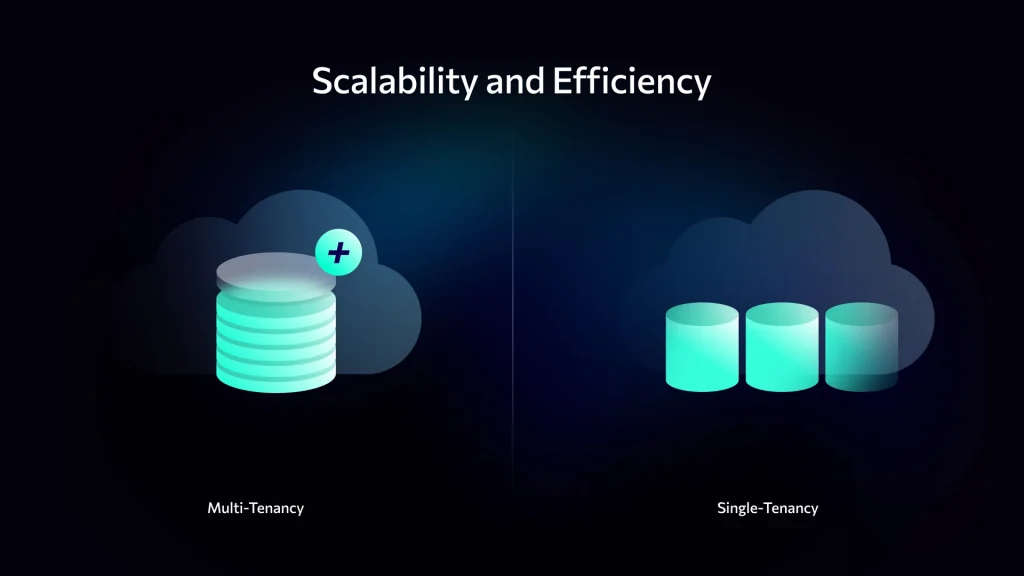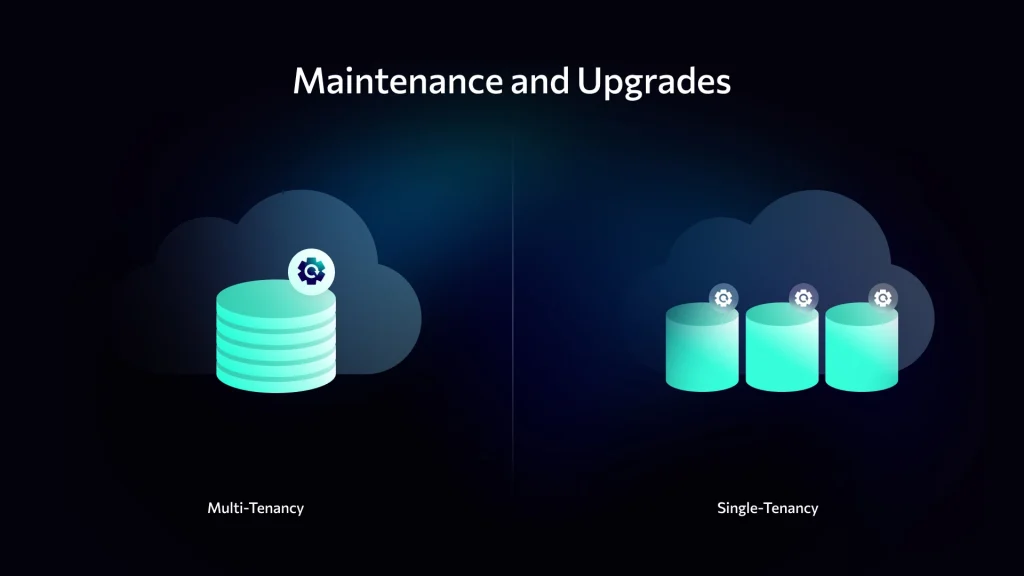Video surveillance as a service, or VSaaS, is reshaping the modern landscape of the video surveillance industry. As a cloud-based technology, VSaaS offers effortless scalability, reduced upfront costs, remote video access, advanced analytics, and easy setup and maintenance. Scalable VSaaS solutions are also highly customizable, which helps customers find a setup perfect for their needs. But there’s one additional benefit of VSaaS that is a standout for telecom and service providers – multitenancy.
What is Multitenancy?
Multitenancy is a sophisticated architecture that enables a singular instance of an application, in this case, scalable VSaaS software, to concurrently support multiple ‘tenants.’ Each tenant has a distinct secure environment that is entirely their own but shares the underlying resources in the cloud – be it public or private. These shared resources include storage, network infrastructure, and computing power.
Technically, this is achieved through the strategic partitioning of data and configurations within the VSaaS software. The data and configuration settings for each tenant are kept completely separate for data privacy purposes.
This multitenant architecture is preferable to the traditional one – which is a single-tenant architecture, where customer data and services are hosted on separate servers or instances. While single-tenancy offers complete isolation, it’s often inefficient in terms of resources and costs. Multitenancy allows customers to efficiently share the necessary resources while safely scaling up when demand increases.
Multitenant Cloud vs. Single-Tenant Cloud
When discussing cloud architectures, particularly for VSaaS software, it’s important to understand the main nuances between multitenant (MT) and single-tenant (ST) cloud solutions:
Resource Sharing
- MT Cloud – Shared resources (storage, computing, network) among clients.
- ST Cloud – Dedicated resources per client. This often results in resource underutilization.
Cost Efficiency
- MT Cloud – Lower costs due to economies of scale. Customers benefit from lower costs as infrastructure expenses are distributed across tenants.
- ST Cloud – Higher costs with full responsibility for dedicated resources borne by the client.
Scalability
- MT Cloud – Highly scalable with flexible resource allocation defending on client needs.
- ST Cloud – Scalability can be limited. May require additional infrastructure investment to expand capacity.

Security and Privacy
- MT Cloud – Isolated tenant data through tight access controls.
- ST Cloud – Isolated tenant data through private infrastructure.
Maintenance and Upgrades
- MT Cloud – Centralized maintenance and uniform upgrades across all tenants.
- ST Cloud – Each instance requires individual maintenance. This is generally time-consuming and costly.

Why Does Multitenant Cloud Architecture Matter?
Multitenant cloud architecture is gaining traction in cloud computing as the benefits have become obvious both to customers as well as Telcos/Service Providers.
1. Streamlined Onboarding and Simple Resource Allocation
This architecture excels at the seamless integration of new users, regardless of whether they are from a single organization or multiple. Unlike other setups that might struggle with demand spikes, multitenant clouds adapt and distribute resources with ease.
2. An Economic Win
Clients are only charged for the resources they use, avoiding unnecessary expenses on unused compute power or storage. Plus, the burden of infrastructure upkeep, including upgrades and updates, is shouldered by the service provider. This eases financial and operational strain on clients.
3. Optimal Resource Use with User Isolation
Each tenant is provided with a secure and isolated environment while simultaneously maximizing the efficiency of resource utilization. This balance between individual privacy and collective resource management is the hallmark of multitenancy design.
4. Transformative Impact on Service Delivery
The structure of multitenant cloud services is revolutionizing delivering of applications and services. It’s a paradigm shift that brings efficiency, scalability, and reliability to meet the diverse needs of organizations.
The Significance of Multitenancy for Telecom Providers
For telecom providers, multitenacy represents more than a buzzword – it’s a winning strategic shift, especially in the realm of VSaaS.
Multitenancy allows telecom providers to optimize their services by sharing resources across multiple clients with great efficiency. This is crucial for the bandwidth-intensive requirements of VSaaS. The scalability offered by multitenancy aligns perfectly with the fluctuating demands typical in the telecom industry, where client requirements for surveillance can vary widely. Service providers can adjust services dynamically, expanding or contracting resources in response to fluctuating user patterns without the need for costly infrastructure changes.
By centralizing operations for multiple clients within a single infrastructure, telecom companies can significantly cut down on their costs for each customer. For VSaaS, where both data storage and processing needs can be substantial, this cost-efficiency is a major advantage. This leads to cost savings for the backend and allows for more competitive pricing models.
What does Multitenancy mean for scalable VSaaS?
Multitenancy transforms how the telecom operators deploy and run Video Surveillance as a Service (VSaaS). It allows a singular instance of a VSaaS platform to cater to several customers simultaneously. Each customer retains a distinct, secure space for their surveillance operations, with exclusive access to their video feeds and analytical data.
Multitenancy and Aipix – A Winning Combination for Enhanced VSaaS
Embracing multitenancy is key for innovative, forward-thinking telecom providers. Platforms like Aipix make this possible. With Aipix’s multitenant architecture, telecom providers can significantly enhance their VSaaS offerings while ensuring both competitive pricing and high-quality surveillance capabilities.
Maximize your business potential with our innovative solutions – contact us to learn how or visit our channel.





